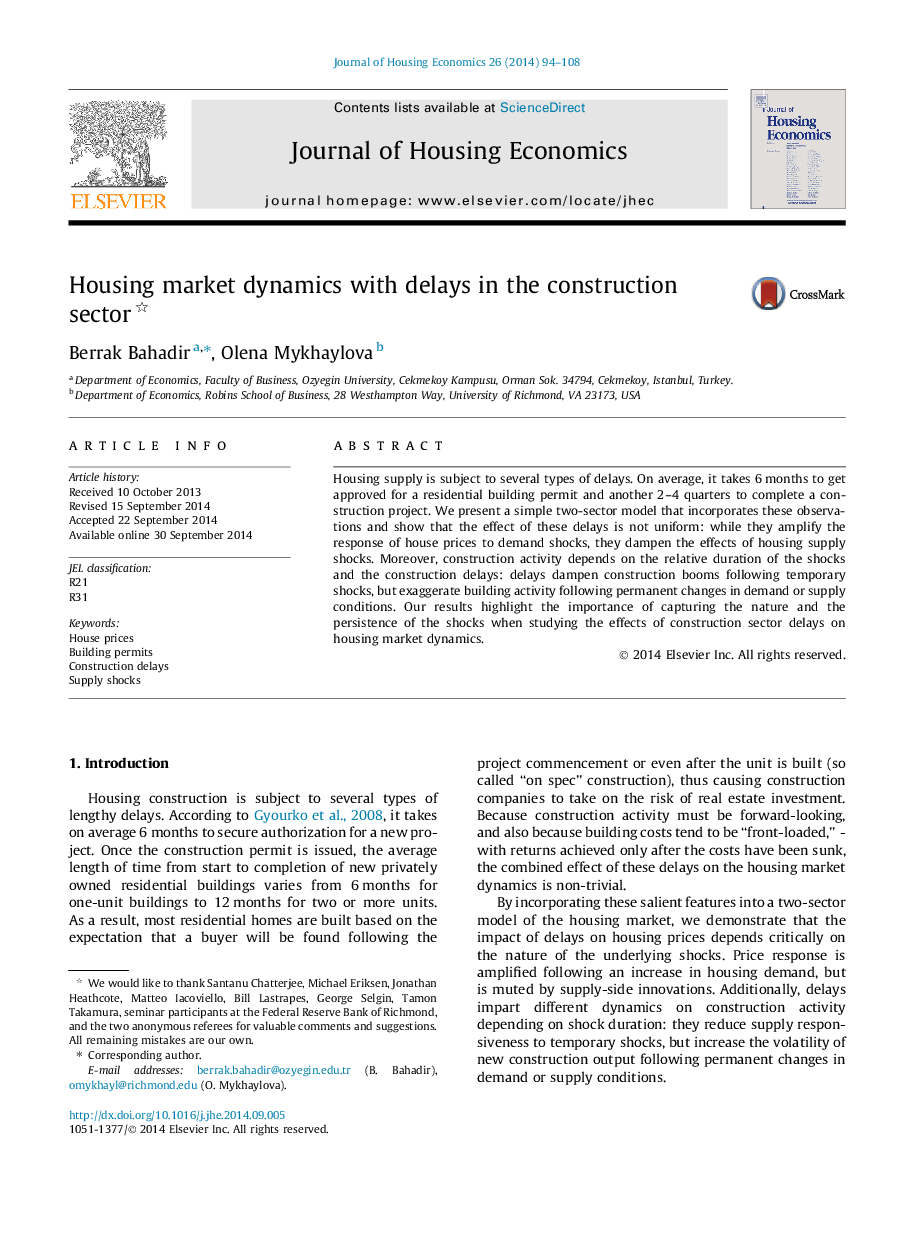| Article ID | Journal | Published Year | Pages | File Type |
|---|---|---|---|---|
| 962595 | Journal of Housing Economics | 2014 | 15 Pages |
Abstract
Housing supply is subject to several types of delays. On average, it takes 6Â months to get approved for a residential building permit and another 2-4 quarters to complete a construction project. We present a simple two-sector model that incorporates these observations and show that the effect of these delays is not uniform: while they amplify the response of house prices to demand shocks, they dampen the effects of housing supply shocks. Moreover, construction activity depends on the relative duration of the shocks and the construction delays: delays dampen construction booms following temporary shocks, but exaggerate building activity following permanent changes in demand or supply conditions. Our results highlight the importance of capturing the nature and the persistence of the shocks when studying the effects of construction sector delays on housing market dynamics.
Related Topics
Social Sciences and Humanities
Economics, Econometrics and Finance
Economics and Econometrics
Authors
Berrak Bahadir, Olena Mykhaylova,
